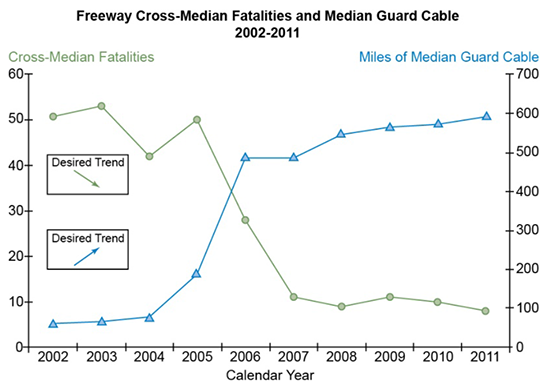|
Search the Noteworthy Practices database Missouri's Blueprint to Arrive Alive Implements System-Wide Safety ImprovementsOriginal publication: FHWA Safety Program | Systemic In Practice | Missouri (PDF, 279kB)Publication Year: 2011Overview of PracticeMissouri is one state that has been successful in identifying and implementing system-wide improvements. Missouri's Blueprint to Arrive Alive, which is the State's SHSP, identifies their “Targeted 10” strategies in education, enforcement, engineering, and public policy areas. The state uses Highway Safety Improvement Program (HSIP) funding for many of these strategies, proactively incorporating the installation of rumble strips/stripes, improved signing and delineation, wider pavement markings, and improved shoulders into pavement resurfacing projects. ResultsSince 2007, almost two-thirds of Missouri's HSIP funds have been allocated to system-wide improvements. While overall results cannot be attributed to specific safety improvements, the evidence is compelling. Between 2005 and 2011, Missouri has seen a 37.5 percent drop in overall fatalities and a 46 percent reduction in lane departure fatalities. In addition, since the installation of cable median barriers on the Interstate system throughout the State, there has been an 80 percent reduction in cross-median crash fatalities on Missouri freeways. 
ContactJohn P. Miller, P.E. Publication Year: 2011 |